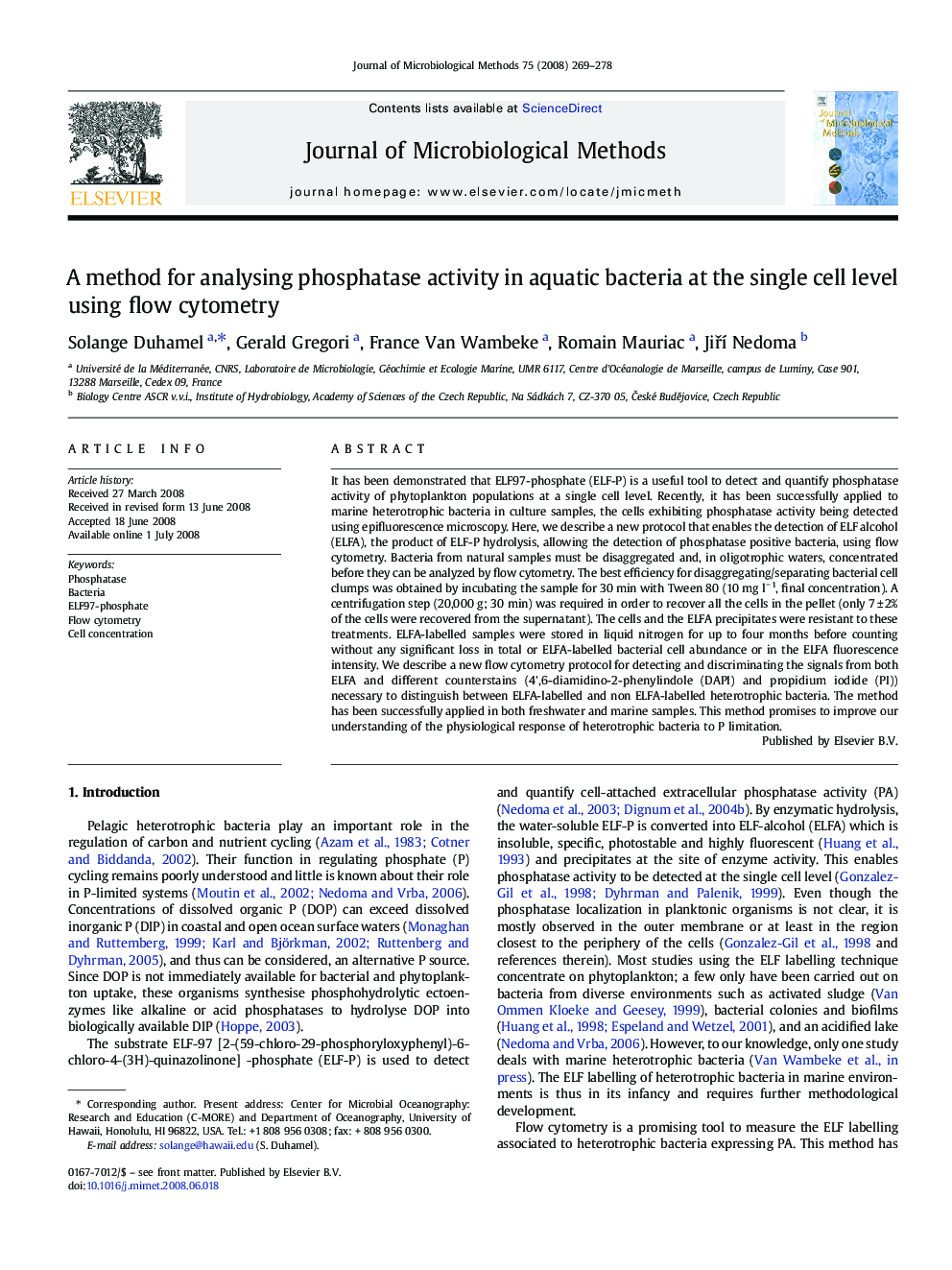| Article ID | Journal | Published Year | Pages | File Type |
|---|---|---|---|---|
| 2090798 | Journal of Microbiological Methods | 2008 | 10 Pages |
It has been demonstrated that ELF97-phosphate (ELF-P) is a useful tool to detect and quantify phosphatase activity of phytoplankton populations at a single cell level. Recently, it has been successfully applied to marine heterotrophic bacteria in culture samples, the cells exhibiting phosphatase activity being detected using epifluorescence microscopy. Here, we describe a new protocol that enables the detection of ELF alcohol (ELFA), the product of ELF-P hydrolysis, allowing the detection of phosphatase positive bacteria, using flow cytometry. Bacteria from natural samples must be disaggregated and, in oligotrophic waters, concentrated before they can be analyzed by flow cytometry. The best efficiency for disaggregating/separating bacterial cell clumps was obtained by incubating the sample for 30 min with Tween 80 (10 mg l− 1, final concentration). A centrifugation step (20,000 g; 30 min) was required in order to recover all the cells in the pellet (only 7 ± 2% of the cells were recovered from the supernatant). The cells and the ELFA precipitates were resistant to these treatments. ELFA-labelled samples were stored in liquid nitrogen for up to four months before counting without any significant loss in total or ELFA-labelled bacterial cell abundance or in the ELFA fluorescence intensity. We describe a new flow cytometry protocol for detecting and discriminating the signals from both ELFA and different counterstains (4',6-diamidino-2-phenylindole (DAPI) and propidium iodide (PI)) necessary to distinguish between ELFA-labelled and non ELFA-labelled heterotrophic bacteria. The method has been successfully applied in both freshwater and marine samples. This method promises to improve our understanding of the physiological response of heterotrophic bacteria to P limitation.
